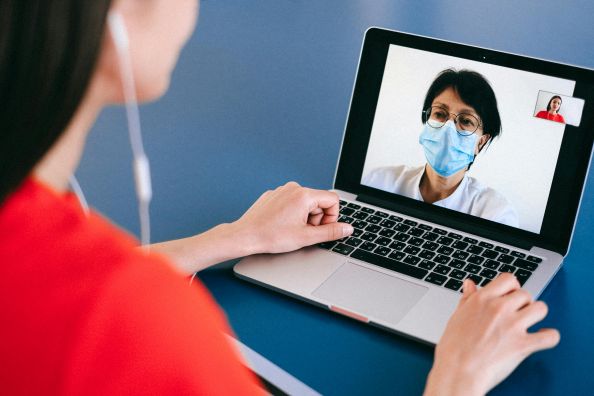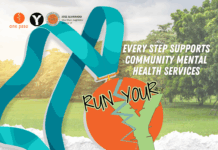
Eye care is one of the biggest healthcare priorities for New York State. The latest statistics from our Department of Health (DOH) show that 3.5 million New Yorkers aged 40 and above alone have some form of vision impairment, while 14.9% of the state’s overall population—another 2.9 million people—have a distance vision impairment like nearsightedness.
However, accessing eye care in New York State is another matter. According to SUNY’s College of Optometry, the state is currently experiencing a shortage of eye care professionals. That doesn’t just impact vision care for residents. A comprehensive eye exam alone is capable of detecting over 250 serious health conditions, including those unrelated to the eyes. That makes improving access to these professionals vital for New Yorkers to maintain both their vision and overall health.
To address the issue, SUNY has begun opening extension campuses for its College of Optometry, paving the way for more optometrists and ophthalmologists to work in the state moving forward. That leaves the question: how can New Yorkers look after their health in the meantime?
The answer may lie in remote eye care. Here are a few technologies helping make this option more accessible in New York State:
Exam availability
New York State isn’t new to ensuring accessible healthcare. Our DOH, for example, has previously worked with the healthcare technology company Ro to deliver in-home vaccinations to seniors, as well as the disabled and homebound, during the COVID-19 pandemic. When it comes to eye care, NY Connects also provides in-home eye exams for homebound individuals. However, these eye exams may still remain inaccessible to a significant number of the state’s residents due to other factors like financial constraints (tests in the US cost anywhere between $75 to $200 without insurance) and distance from the nearest urban center. That’s where tele-optometry comes into play.
The startups DigitalOptometrics LLC and 20/20 Vision Center LLC have developed software that can facilitate remote eye exams by connecting licensed eye care professionals with patients via video call, creating a cheaper and more readily available alternative to traditional vision tests. Here, tele-optometrists can remotely image the eye, assess it with the equipment they have on hand, and get back to patients with results and recommendations. These software programs can be used not just in New York, but across the country and even in some parts of Canada, with DigitalOptometrics and Vision Center accommodating up to 2,000 exams a day. That means there’s always an optometrist available for patients to consult—and people living in New York State can easily get eye exams despite the current shortage of eye care professionals in the state.
Eyewear procurement
Though eye exams are available for homebound patients, the same can’t always be said for eyewear itself. As with exams, New Yorkers may also have difficulty procuring or replacing their glasses if they live in a rural area or don’t have the funds available—especially since a pair can cost as much as $1,000 without insurance. In these cases, online eyewear retailers can be especially beneficial. These eyewear websites can be more affordable, as they don’t need to pay the costs of running a physical store. They also offer additional discounts and sales to slash prices even further.
The glasses available online can accommodate lenses for prescriptions of any strength, and users can virtually “try” them on using tools powered by augmented reality and AI. These measure the face to provide an accurate digital overlay of different frames, allowing them to assess their fit and appearance at home. Eyewear websites also tell buyers how to measure pupillary distance (PD) online. PD, which measures the distance between the centers of the pupils, is crucial for ensuring eyewear can actually correct one’s vision, and traditionally could only be taken in person. Thanks to Glasses.com offering apps like Opthy, however, New Yorkers can do so with just their smartphone. That means they can easily procure the necessary eyewear online just like they would in person, even if there aren’t any eyecare professionals nearby to fit and sell them prescription glasses.
Telesurgery innovations
Other statistics from New York State’s DOH note that a significant number of residents are diagnosed with more serious eye conditions that can’t be treated with corrective eyewear. Over 4.1% of the population (more than 800,000 individuals) have age-related macular degeneration, which causes central vision loss. Meanwhile, a whopping 19%—over 3.7 million people—have cataracts. Diseases like these often require surgical intervention to slow their progression and prevent further vision loss. However, these procedures need to be performed by eye care specialists, like ophthalmologists. Both New York State and the wider US are similarly experiencing a shortage of these professionals—there’s currently only one ophthalmologist available for every 18,400 Americans.
Telehealth again displays its versatility here through what’s known as telesurgery. In essence, this involves surgeons remotely conducting various procedures with the help of an on-site robot programmed to react in as little as 10 milliseconds—significantly less than the 200 milliseconds and 100 milliseconds of reaction time displayed by F1 race car drivers and talented surgeons, respectively. In eye care, researchers are currently figuring out how to conduct robot-assisted cataract surgery, with major advances already greenlit for general use. The robots involved are equipped with high-definition and high-speed cameras that can comprehensively image the eye and track complications like ruptures better than human surgeons can. These won’t just improve eye surgery outcomes—they’ll help ophthalmologists treat patients outside their immediate area, including those living in New York State, amid the current shortage.





